Model overrides are essential tools in banking that allow human judgment to correct automated decisions, but they require robust governance to meet SR 11-7 compliance. This comprehensive guide explores best practices for building effective override frameworks that transform regulatory requirements into strategic advantages through proper documentation, analysis, and continuous improvement processes.
In the world of banking, mathematical models are the silent engines driving critical decisions, from credit approvals to fraud detection. However, these powerful engines sometimes require a human hand on the wheel. This is the realm of model overrides, a practice that, while necessary, is subject to intense regulatory scrutiny. For firms navigating the standards of SR 11-7, a robust framework for override governance is not merely good practice—it is a critical component of compliant model risk management.
While precise statistics on losses from poor override practices are often internal to institutions, the broader impact of model failures is significant. Studies indicate that inadequate data and model governance can result in billions of dollars in errors, fines, and reputational damage. For an example of how advanced validation techniques mitigate such risks, consider our case study on achieving 40% faster validation of third-party credit risk models.
This blog outlines best practices for managing model overrides, ensuring they serve as a tool for expert judgment rather than a source of hidden risks.
What is a Model Override and Why Does It Matter?
A model override involves a manual adjustment to a model’s output. For instance, a loan officer might increase a borrower’s credit line beyond the automated model’s recommendation, based on qualitative information, such as an anticipated inheritance not captured by the model.
Overrides are a double-edged sword. They enable expert judgment to address model limitations or unique circumstances that quantitative data cannot capture, such as those enhanced by real-time data in credit risk management. However, unchecked overrides can undermine model integrity, introduce bias, mask weaknesses, and create opaque decision-making processes—a key concern for regulators. To explore the broader spectrum of model risks, see our discussion on managing various model risks in financial institutions.
What SR 11-7 Demands
Regulators, through guidance like SR 11-7 and the OCC’s Comptroller’s Handbook, emphasize the need for a formal override process. Key expectations include:
- Documenting clear policies and procedures for override use.
- Requiring a documented rationale and justification for each override.
- Establishing a structured approval process with tiered authority based on override significance.
- Maintaining a centralized, auditable log of override activities.
- Regularly analyzing override data to identify trends and inform model improvements.
For a broader understanding of regulatory compliance frameworks, refer to our guide on compliance risk management in banking.
Best-Practices for Model Override Governance
A best-practice framework transcends mere compliance, delivering strategic value. The essential pillars include:
1. Establish a Clear Governance “Rulebook”
The override policy serves as the single source of truth, defining:
- What constitutes an override.
- Permissible reasons for overrides (with standardized reason codes).
- Prohibited reasons for overrides.
- Roles and responsibilities of model owners, users, approvers, and risk management teams.
For insights into building effective governance frameworks, explore our best practices for GRC management.
2. Define Roles, Responsibilities, and Approval Hierarchies
Accountability is paramount. A clear hierarchy ensures appropriate scrutiny:
- Level 1 (Initiator)
A front-line user (e.g., loan officer) identifies the need for an override and provides justification. - Level 2 (Manager)
A manager reviews and approves routine overrides. - Level 3 (Senior Management/Committee)
High-impact or frequent overrides escalate to senior managers or a risk committee.
3. Set Intelligent Thresholds and Triggers
Data-driven thresholds help identify problematic override activity:
- Quantitative Thresholds
Monitor metrics like override rate (percentage of decisions overridden) or financial impact. For example, an alert may trigger if the override rate exceeds 5% in a quarter, potentially indicating model deficiencies. - Qualitative Triggers
Initiate reviews for recurring override reasons or concentration with specific users or branches.
Learn how data analytics can enhance such monitoring in our blog on use cases of data analytics in commercial lending.
4. Create Robust Escalation Paths
When thresholds are breached, predefined escalation paths ensure timely action, such as:
- Email notifications to model owners and risk management teams.
- Mandatory reviews of the overrides causing the breach.
- Inclusion in the next model risk committee agenda.
5. An Auditable Override Tracking System
A centralized, auditable system (often within a GRC platform) is essential for tracking overrides. Each entry should capture:
- A serial number for tracking.
- The model and version overridden.
- Original and overridden outputs.
- Standardized reason code and detailed narrative.
- Initiator, approver, and timestamps.
- Financial or risk impact.
- Outcome of the overridden decision (e.g., loan performance).
For a real-world example of technology enabling such tracking, see our case study on real-time reconciliation tracking with Power BI.
Conclusion
Effective model override governance is a strategic imperative, not just a regulatory requirement. It ensures expert judgment is applied transparently and audibly, transforming override data into a valuable asset. This approach not only meets SR 11-7 standards but also fosters better models, smarter decisions, and a robust risk culture. For a deeper exploration of these strategies, download our white paper on model risk management in financial services.
Navigating the complexities of model risk management can be challenging. Anaptyss specializes in designing tailored, compliant, and efficient solutions for financial institutions. Our team of seasoned risk management professionals brings deep regulatory expertise and practical implementation experience to help banks, credit unions, and financial services companies transform their MRM programs.
To discover how we can strengthen your override governance, contact our experts at info@anaptyss.com.



